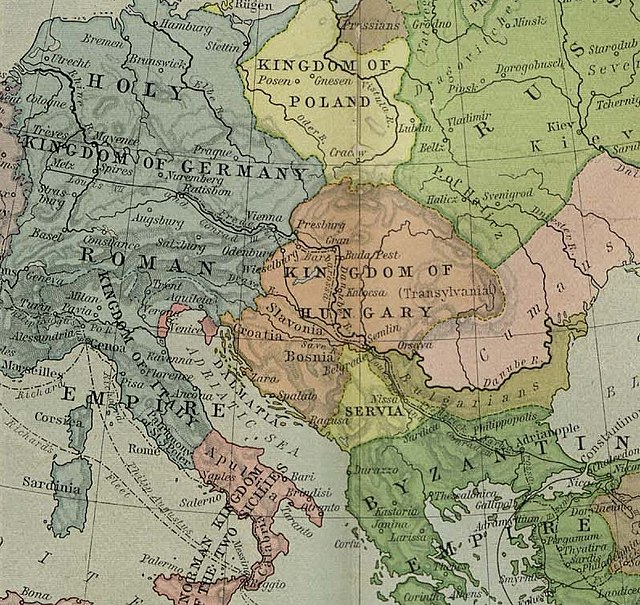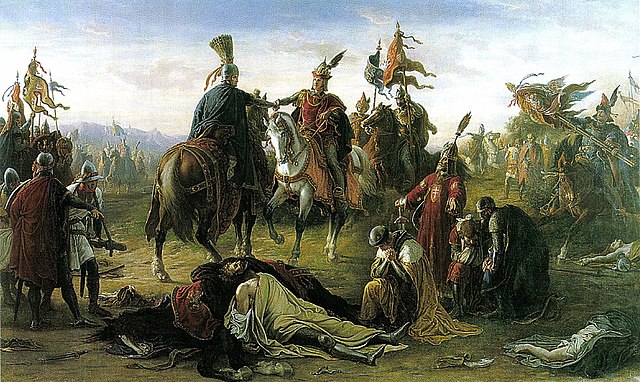John Hunyadi was a leading Hungarian military and political figure in the Kingdom of Hungary during the 15th century. According to most contemporary sources, he was the member of a noble family of Wallachian ancestry. Through his struggles against the Ottoman Empire, he earned for himself the nickname 'Turk-buster' from his contemporaries. Due to his merits, he quickly received substantial land grants. By the time of his death, he was the owner of immense land areas, totaling approximately four million cadastral acres, which had no precedent before or after in the Kingdom of Hungary. His enormous wealth, his military and political weight were primarily directed towards the purposes of the Ottoman wars.
John Hunyadi depicted in the 15th-century Chronica Hungarorum (Brno, 1488)
King Sigismund of Hungary's charter of the grant of Hunyad Castle (in present-day Hunedoara, Romania) to Voyk, Magos and Radol (the sons of Serbe), and their uncle or cousin, Radol, and Voyk's son, John
Sigismund, King of Hungary
John Hunyadi (John Thuróczy – Chronica Hungarorum, 1488)
The Kingdom of Hungary was a monarchy in Central Europe that existed for nearly a millennium, from the Middle Ages into the 20th century. The Principality of Hungary emerged as a Christian kingdom upon the coronation of the first king Stephen I at Esztergom around the year 1000; his family led the monarchy for 300 years. By the 12th century, the kingdom became a European power.
King Stephen I of Hungary
The Holy Crown of Hungary along with other regalia
Hungary (including Croatia) in 1190, during the rule of Béla III
The Meeting of Ladislaus IV and Rudolf I during the Battle on the Marchfeld, painting by Mór Than (1873)







